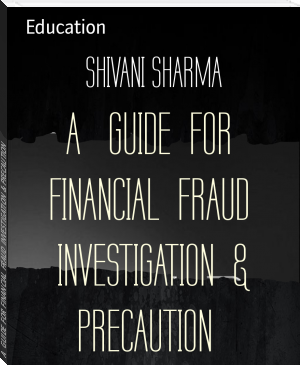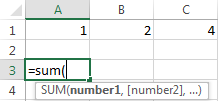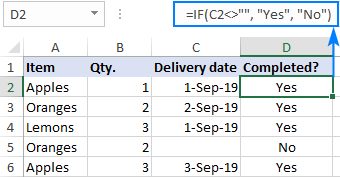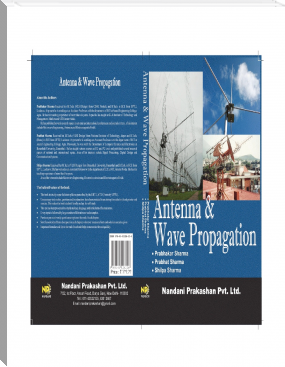A GUIDE FOR FINANCIAL FRAUD INVESTIGATION & PRECAUTION by SHIVANI SHARMA (thriller books to read txt) 📖

- Author: SHIVANI SHARMA
Book online «A GUIDE FOR FINANCIAL FRAUD INVESTIGATION & PRECAUTION by SHIVANI SHARMA (thriller books to read txt) 📖». Author SHIVANI SHARMA
Outlook shortcut keys
Alt + S -- Send the email. Ctrl + C -- Copy selected text. Ctrl + X -- Cut selected text. Ctrl + P -- Open print dialog box. Ctrl + K -- Complete name/email typed in address bar. Ctrl + B -- Bold highlighted selection. Ctrl + I -- Italicize highlighted selection. Ctrl + U -- Underline highlighted selection. Ctrl + R -- Reply to an email. Ctrl + F -- Forward an email. Ctrl + N -- Create a new email. Ctrl + Shift + A -- Create a new appointment to your calendar. Ctrl + Shift + O -- Open the outbox. Ctrl + Shift + I -- Open the inbox. Ctrl + Shift + K -- Add a new task. Ctrl + Shift + C -- Create a new contact. Ctrl + Shift+ J -- Create a new journal entry.
WINKEY shortcuts:
WINKEY + D -- Bring desktop to the top of other windows. WINKEY + M -- Minimize all windows. WINKEY + SHIFT + M -- Undo the minimize done by WINKEY + M and WINKEY + D. WINKEY + E -- Open Microsoft Explorer. WINKEY + Tab -- Cycle through open programs on the taskbar. WINKEY + F -- Display the Windows Search/Find feature. WINKEY + CTRL + F -- Display the search for computers window. WINKEY + F1 -- Display the Microsoft Windows help. WINKEY + R -- Open the run window. WINKEY + Pause /Break -- Open the system properties window. WINKEY + U -- Open utility manager. WINKEY + L -- Lock the computer (Windows XP & later). Basic of Excel
Basic Skills for Excel Users
If you use Excel at work, or list it on your résumé, what tasks should you be able to do?
I'm sure your list is different, but here's mine. Would any of these make your list?
Sum or Count cells, based on criteria Build a Pivot Table Write a formula with absolute and relative references Create a drop down list of options in a cell Sort a list without messing up the data Use a formula to look up a value in a table Record and modify a simple macro Design and build a simple application, such as an order form Create a chart from worksheet data Apply conditional formatting that uses a formula Nest two or more functions in a formula Insert and protect worksheets (and understand the limits of Excel's protection) Perform simple date and time arithmetic Filter unique items from a list.
The basics of Excel formulas
Before providing the basic Excel formulas list, let's define the key terms just to make sure we are on the same page. So, what do we call an Excel formula and Excel function?
Formula is an expression that calculates values in a cell or in a range of cells.For example, =A2+A2+A3+A4 is a formula that adds up the values in cells A2 through A4.
Function is a predefined formula already available in Excel. Functions perform specific calculations in a particular order based on the specified values, called arguments, or parameters.For example, instead of specifying each value to be summed like in the above formula, you can use the SUM function to add up a range of cells: =SUM(A2:A4)
You can find all available Excel functions in the Function Library on the Formulas tab:

There exist 400+ functions in Excel, and the number is growing by version to version. Of course, it's next to impossible to memorize all of them, and you actually don't need to. The Function Wizard will help you find the function best suited for a particular task, while the Excel Formula Intellisense will prompt the function's syntax and arguments as soon as you type the function's name preceded by an equal sign in a cell:

Clicking the function's name will turn it into a blue hyperlink, which will open the Help topic for that function.
Tip. You don't necessarily have to type a function name in all caps, Microsoft Excel will automatically capitalize it once you finish typing the formula and press the Enter key to complete it.10 Excel basic functions you should definitely know
What follows below is a list of 10 simple yet really helpful functions that are a necessary skill for everyone who wishes to turn from an Excel novice to an Excel professional.
SUM
The first Excel function you should be familiar with is the one that performs the basic arithmetic operation of addition:
SUM(number1, [number2], …)
In the syntax of all Excel functions, an argument enclosed in [square brackets] is optional, other arguments are required. Meaning, your Sum formula should include at least 1 number, reference to a cell or a range of cells. For example:
=SUM(B2:B6) - adds up values in cells B2 through B6.
=SUM(B2, B6) - adds up values in cells B2 and B6.
If necessary, you can perform other calculations within a single formula, for example, add up values in cells B2 through B6, and then divide the sum by 5:
=SUM(B2:B6)/5
To sum with conditions, use the SUMIF function: in the 1st argument, you enter the range of cells to be tested against the criteria (A2:A6), in the 2nd argument - the criteria itself (D2), and in the last argument - the cells to sum (B2:B6):
=SUMIF(A2:A6, D2, B2:B6)
In your Excel worksheets, the formulas may look something similar to this:

Tip. The fastest way to sum a column or row of numbers is to select a cell next to the numbers you want to sum (the cell immediately below the last value in the column or to the right of the last number in the row), and click the AutoSum button on the Home tab, in the Formats group. Excel will insert a SUM formula for you automatically.Useful resources:
Excel Sum formula examples - formulas to total a column, rows, only filtered (visible) cells, or sum across sheets. Excel AutoSum - the fastest way to sum a column or row of numbers. SUMIF in Excel - formula examples to conditionally sum cells. SUMIFS in Excel - formula examples to sum cells based on multiple criteria.AVERAGE
The Excel AVERAGE function does exactly what its name suggests, i.e. finds an average, or arithmetic mean, of numbers. Its syntax is similar to SUM's:
AVERAGE(number1, [number2], …)
Having a closer look at the formula from the previous section (=SUM(B2:B6)/5), what does it actually do? Sums values in cells B2 through B6, and then divides the result by 5. And what do you call adding up a group of numbers and then dividing the sum by the count of those numbers? Yep, an average!
The Excel AVERAGE function performs these calculations behind the scenes. So, instead of dividing sum by count, you can simply put this formula in a cell:
=AVERAGE(B2:B6)
To average cells based on condition, use the following AVERAGEIF formula, where A2:A6 is the criteria range, D3 is he criteria, and B2:B6 are the cells to average:
=AVERAGEIF(A2:A6, D3, B2:B6)

Useful resources:
Excel AVERAGE - average cells with numbers. Excel AVERAGEA - find an average of cells with any data (numbers, Boolean and text values). Excel AVERAGEIF - average cells based on one criterion. Excel AVERAGEIFS - average cells based on multiple criteria. How to calculate weighted average in Excel How to find moving average in ExcelMAX & MIN
The MAX and MIN formulas in Excel get the largest and smallest value in a set of numbers, respectively. For our sample data set, the formulas will be as simple as:
=MAX(B2:B6)
=MIN(B2:B6)

COUNT & COUNTA
If you are curious to know how many cells in a given range contain numeric values (numbers or dates), don't waste your time counting them by hand. The Excel COUNT function will bring you the count in a heartbeat:
COUNT(value1, [value2], …)
While the COUNT function deals only with those cells that contain numbers, the COUNTA function counts all cells that are not blank, whether they contain numbers, dates, times, text, logical values of TRUE and FALSE, errors or empty text strings (""):
COUNTA (value1, [value2], …)
For example, to find out how many cells in column B contain numbers, use this formula:
=COUNT(B:B)
To count all non-empty cells in column B, go with this one:
=COUNTA(B:B)
In both formulas, you use the so-called "whole column reference" (B:B) that refers to all the cells within column B.
The following screenshot shows the difference: while COUNT processes only numbers, COUNTA outputs the total number of non-blank cells in column B, including the the text value in the column header.

Useful resources:
Excel COUNT function - a quick way to count cells with numbers. Excel COUNTA function - count cells with any values (non-empty cells). Excel COUNTIF function - count cells that meet one condition. Excel COUNTIFS function - count cells with several criteria.IF
Judging by the number of IF-related comments on our blog, it's the most popular function in Excel. In simple terms, you use an IF formula to ask Excel to test a certain condition and return one value or perform one calculation if the condition is met, and another value or calculation if the condition is not met:
IF(logical_test, [value_if_true], [value_if_false])
For example, the following IF statement checks if the order is completed (i.e. there is a value in column C) or not. To test if a cell is not blank, you use the "not equal to" operator (<>) in combination with an empty string (""). As the result, if cell C2 is not empty, the formula returns "Yes", otherwise "No":
=IF(C2<>"", "Yes", "No")

Useful resources:
IF function in Excel with formula examples How to use nested IFs in Excel The desire to acquire knowledge about the surrounding world and human society is quite natural and understandable for a person. Life is so developed that an uneducated person will never occupy a high position in any field. Humanity in its mass, and each person individually, develops objectively, regardless of certain life circumstances and obstacles, but with different intensity. The speed of development depends on the quality of training.
The desire to acquire knowledge about the surrounding world and human society is quite natural and understandable for a person. Life is so developed that an uneducated person will never occupy a high position in any field. Humanity in its mass, and each person individually, develops objectively, regardless of certain life circumstances and obstacles, but with different intensity. The speed of development depends on the quality of training.




Comments (0)